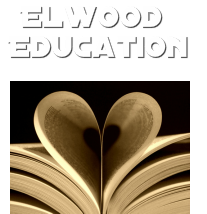QUOTING AND CITING A PLAY
REFERRING TO A PLAY OR COMMONLY DISCUSSED WORKS
Excerpted from the MLA Handbook for Writers of Research Papers, 7th edition.
From section 6.4.8 (page 226-29):
In a reference to a commonly studied prose work, such as a novel or play, that is available in several editions, it is helpful to provide more information than just a page number from the edition used: a chapter number, for example, would help readers to locate a quotation in any copy of a novel. In such a reference, give the page number first, add a semicolon, and then give other identifying information, using appropriate abbreviations: (130; ch. 9) or (271; bk. 4, ch. 2).
When included in parenthetical references, the titles of the books of the Bible and of famous literary works are often abbreviated: (1 Chron. 21.8) or (Rev. 21.3) or (Oth. 4.2.7–13) or (FQ 3.3.53.3)
The above abbreviations are for the following works:
1 Chron. = 1 Chronicles (Bible)
Rev. = Revelation (also called Apocalypse) (Bible)
Oth. = Othelo (Shakespearian play)
FQ = The Faerie Queene (Spenser)
When citing commonly discussed works, use standard abbreviations. (See MLA section 7.7, pages 251-56.) For example, the standard abbreviation for Romeo and Juliet is Rom.
QUOTING FROM A PLAY
To cite from a play, provide the number for the Act / scene / line(s) in that order with periods between the numbers. Although it is not required, provide the page numbers as explained above.
EXAMPLE:
When Romeo finally speaks to his adored one, Juliet, he hesitates to reveal his identity because of their familys' feud. When she asks, he replies, “By a name / I know not how to tell thee who I am” (82; 2.2.53–54). Romeo fears that she will reject him and wishes he could figure out how to deliver this deadly news without such devastating risk.
Notice the various numbers in the above quote. They are explained below:
(page number; Act.Scene.lines)
82 ; 2 . 2 . 53–54
The slash between the words name and I in the above passage indicates a line break. A line break is where a line ends. It is not necessarily the end of a sentence or clause.
Excerpted from the MLA Handbook for Writers of Research Papers, 7th edition.
From section 6.4.8 (page 226-29):
In a reference to a commonly studied prose work, such as a novel or play, that is available in several editions, it is helpful to provide more information than just a page number from the edition used: a chapter number, for example, would help readers to locate a quotation in any copy of a novel. In such a reference, give the page number first, add a semicolon, and then give other identifying information, using appropriate abbreviations: (130; ch. 9) or (271; bk. 4, ch. 2).
When included in parenthetical references, the titles of the books of the Bible and of famous literary works are often abbreviated: (1 Chron. 21.8) or (Rev. 21.3) or (Oth. 4.2.7–13) or (FQ 3.3.53.3)
The above abbreviations are for the following works:
1 Chron. = 1 Chronicles (Bible)
Rev. = Revelation (also called Apocalypse) (Bible)
Oth. = Othelo (Shakespearian play)
FQ = The Faerie Queene (Spenser)
When citing commonly discussed works, use standard abbreviations. (See MLA section 7.7, pages 251-56.) For example, the standard abbreviation for Romeo and Juliet is Rom.
QUOTING FROM A PLAY
To cite from a play, provide the number for the Act / scene / line(s) in that order with periods between the numbers. Although it is not required, provide the page numbers as explained above.
EXAMPLE:
When Romeo finally speaks to his adored one, Juliet, he hesitates to reveal his identity because of their familys' feud. When she asks, he replies, “By a name / I know not how to tell thee who I am” (82; 2.2.53–54). Romeo fears that she will reject him and wishes he could figure out how to deliver this deadly news without such devastating risk.
Notice the various numbers in the above quote. They are explained below:
(page number; Act.Scene.lines)
82 ; 2 . 2 . 53–54
The slash between the words name and I in the above passage indicates a line break. A line break is where a line ends. It is not necessarily the end of a sentence or clause.
